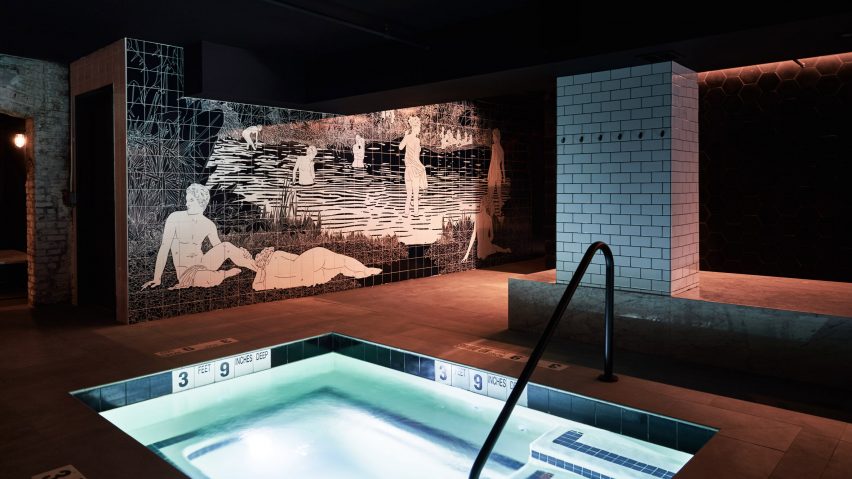
Bathhouse spa with sensory deprivation tank opens in old Williamsburg soda factory
A 1930s soda factory in Williamsburg, Brooklyn has been transformed into bathhouse with a subterranean spa influenced by Scandinavian saunas, Russian banyas and Turkish hammams.
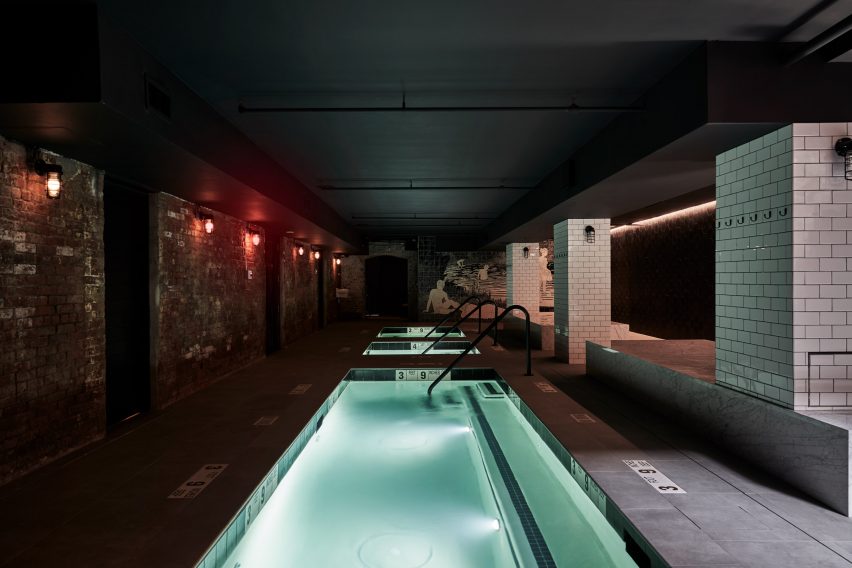
Founders Jason Goodman and Travis Talmadge collaborated with Manhattan firm Verona Carpenter Architects to reinvigorate the space to be a unique venue for social bathing called Bathhouse.
The 600-square-metre underground spa is lined with original brickwork and geometric matte-black tiles. A custom aqua and white tile mural by illustrator Amit Greenberg displays an Ancient Roman-inspired bathing scene as a focal point on the back wall.
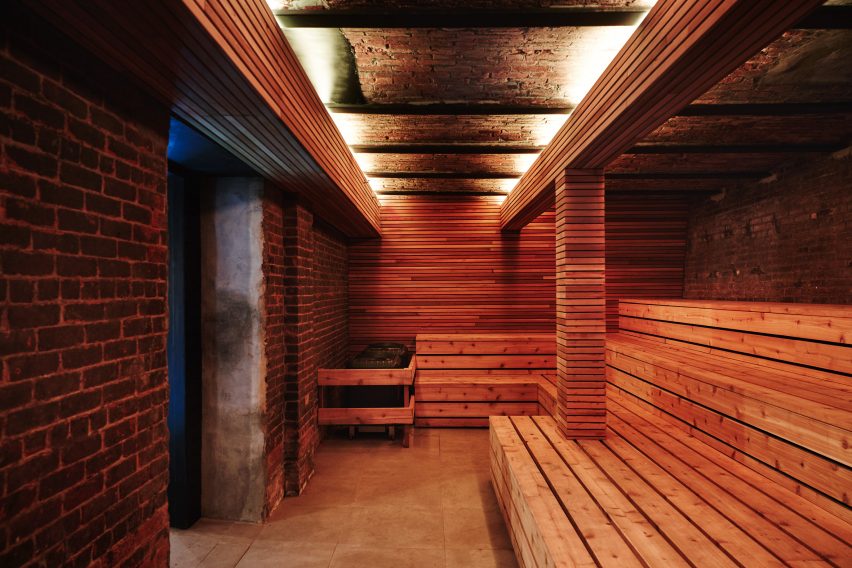
Among the globally influenced therapies are two red cedar saunas: one "tropical" with more humidity and the other with less moisture that is more typically Finnish-style.
There is also a steam room, a trio of thermal pools – including a traditionally Russian cold plunge – and multiple heated marble slabs adapted from a Turkish hammam.
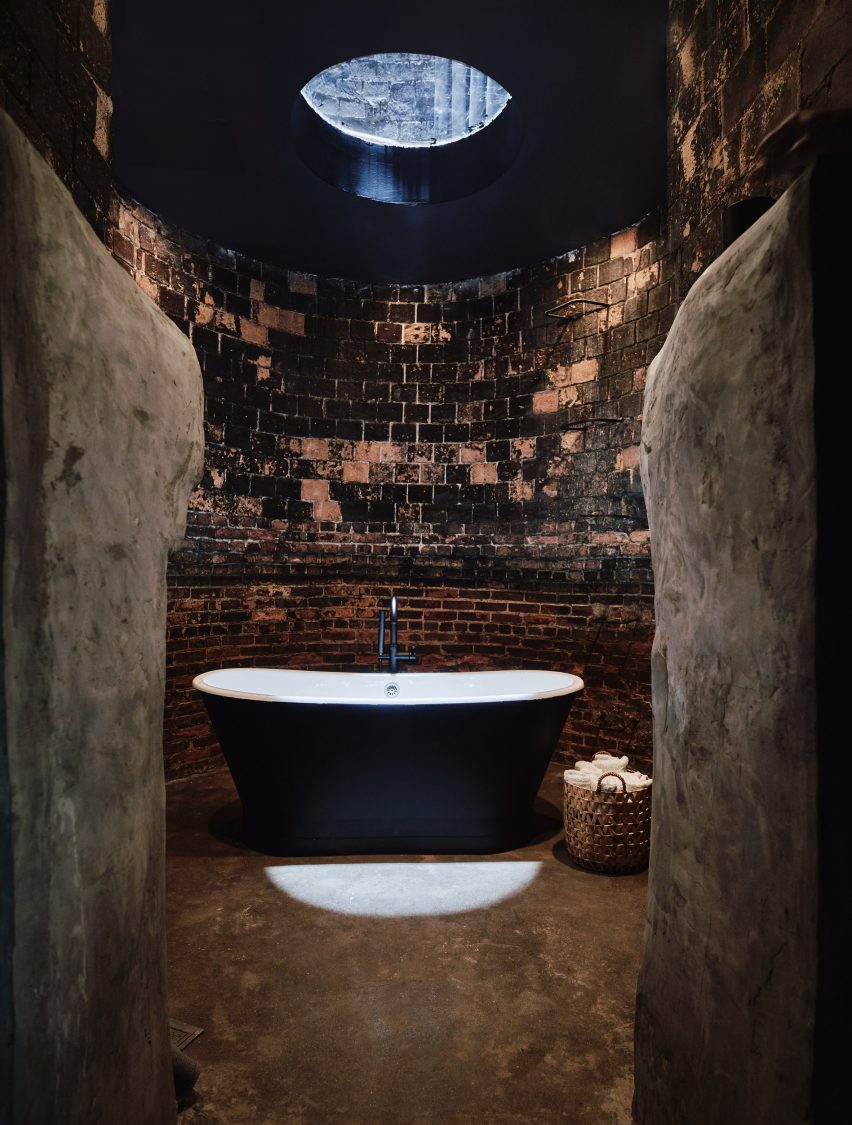
The pools are surrounded by 10 private treatment rooms with original vaulted ceilings.
Programming incorporates ancient wellness rituals and modern recovery techniques developed by sports professionals, such as athletic massages, stretching, head-to-toe scrubs and cryotherapy.
The spa also has a sensory deprivation chamber with an isolation tank designed by Float Labs, which is saturated with Epsom salts to create a feeling of weightlessness.
"Float Labs makes the only tanks that are UL-certified (a global safety certification), and ours is the only one on the East Coast," Goodman added.
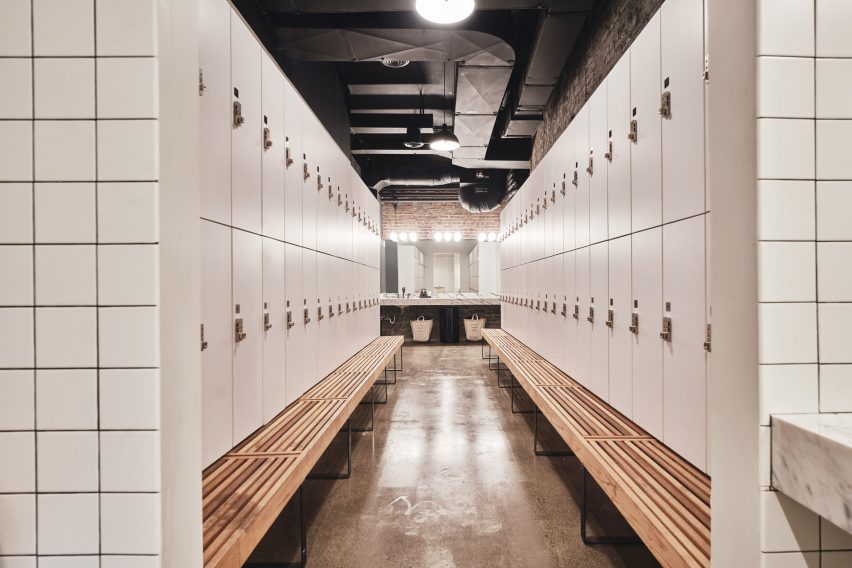
In the women's locker area is a "ritual room" with a single cast iron bathtub that sits underneath a preserved 30-metre-tall brick smokestack that's been illuminated.
Bathhouse's facilities also include a restaurant. Two separate street-level entrances were created to access the two, but the interior space is free flowing.
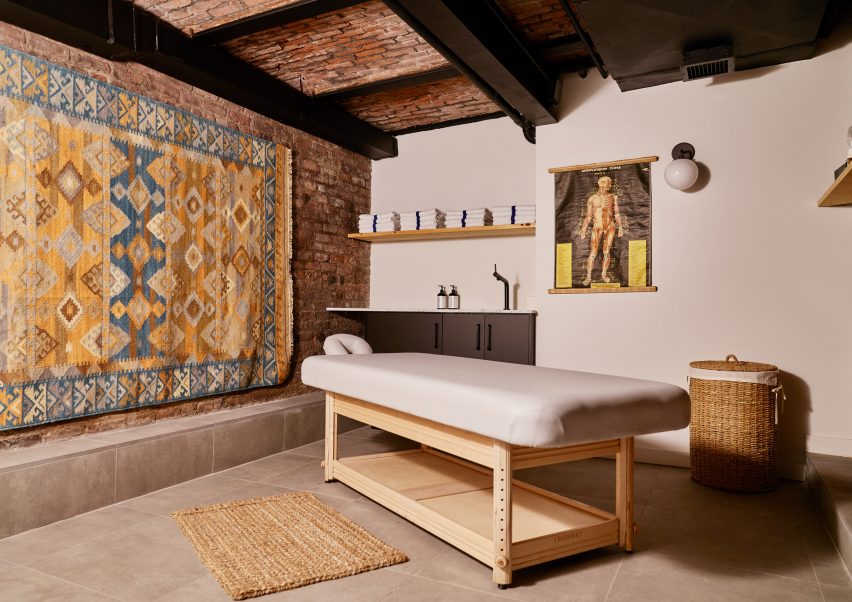
"The original entrance had a ladder leading straight down to the basement level," Goodman told Dezeen. "There was no real ceiling because of the height of the smokestacks, so we had to construct an entirely new ground floor."
A handmade cement-tiled desk sits in the spa's reception, leading into a custom concrete walkway flanked by plant-filled infinity mirrored boxes.
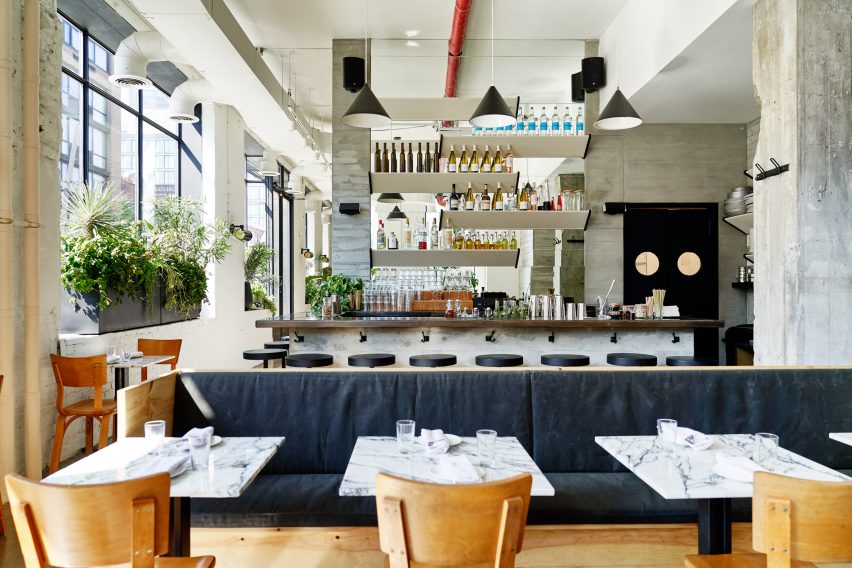
New York restaurateur Akiva Elstein designed Bathhouse's street-level eatery with waxed canvas banquettes, pine wood accents and industrial ironwork.
"Our guests can just put on a robe after enjoying the baths and head up to the restaurant for a seasonal meal," said Goodman. "It's all meant to be a very social experience."
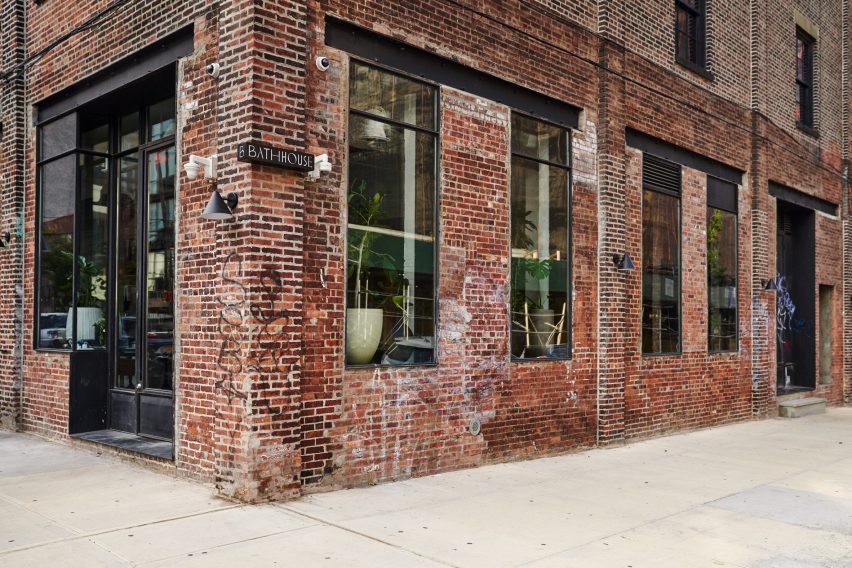
Bathhouse joins a number of contemporary facilities tapping into the benefits of the communal bathing culture, as explored in a 2016 exhibition curated by Jane Withers. Examples include Peter Zumthor's Therme Vals in Switzerland and a sauna in Gothenburg, Sweden, designed by Raumlabor.
Photography is by Adrian Gaut.